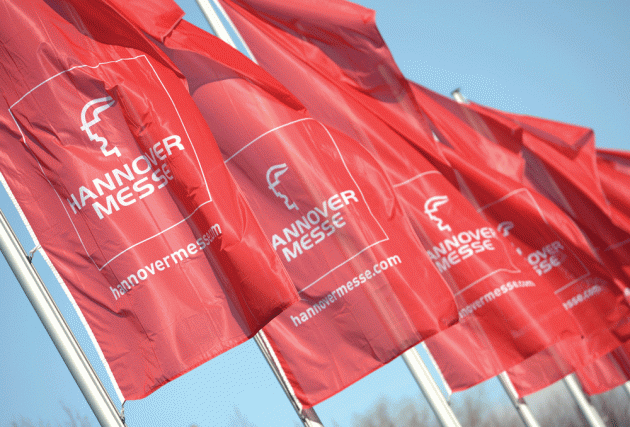
Taking your show on the road?
By Mark Drake
Business Operations Industry Manufacturing Events Hannover MesseGetting the most out of trade events.

Hannover Messe in Germany (April 13-17, 2015) is a huge international trade fair featuring industrial technology. PHOTO: HANNOVER MESSE
Most of us have run a lemonade stand or helped our children do so. There we learned the basics of marketing and selling, such as being alert for potential customers, and having an effective presentation, competitive pricing and a good product. Scale it up a bit and it’s all good for the international trade show.
For most exporters, trade shows are a critical part of the marketing mix, but they’re extremely expensive and represent a sizeable budget item, especially for companies operating in several countries. Planning and attention to detail are important. Here are some points to consider:
Which market and why. Are you exhibiting for positive impact compared with competitors, to launch new products and services, or to try to break into a new market?
Type of show. There are huge international fairs such as Hannover Messe that are prestigious but pricey, and where small booths are almost invisible, and more focused international shows such as the annual Las Vegas electronic wizardry shindig. Smaller regional and strictly business-focused events cover specific sectors of the economy. Choose the type of show where you’ll stand out and make a strong impression with an attractive booth. Partnering with associations, government missions or even other non-competitive organizations offer opportunities for cost sharing.
Booth design. Make it visitor-friendly and uncluttered. Angled mirrors can help make the booth look larger. Exhibits should take up no more than 30% of the space. The design must attract passing traffic and emphasize solutions and benefits rather than products per se. There should be an area for quiet one-on-one discussions with serious clients, and enough space (ideally at least 25 square feet per person) for the sales and technical team (dressed in similar outfits) to operate effectively. See www.skylinetoronto.com for design ideas.
Booth location. This can be tricky. Large regular exhibitors reserve their places from one year to the next, aiming for their previous central or corner booth, or use their clout to oust someone from a coveted position. Location is everything.
Other costs. There are many and some variables but they usually include: transporting the booth and equipment, utility connections, cleaning, accommodation and per diems for everyone attending, post show clean-up and return of the equipment.
Personnel. Have sufficient sales and technical support staff on hand to handle the expected number of visitors, plus management to deal with top-level visitors or policy questions. While shows represent an attractive break from routine and can be fun, working a booth is extremely tiring, and the team should be in top form.
Training. Put your best people on the team, and check out their sales-show selling techniques. They need to be highly knowledgeable about the products, confident, customer friendly and full of energy! Train them in open ended questions, such as: What brings you into our booth today? What’s your connection with our industry sector? Once the team member speaks with someone, he/she needs to quickly assess if this is a gawker, brochure collector or qualified lead.
Before the show. Unless breaking into a totally new market, know your major customers. Write and invite them to stop by. Maybe arrange a small “by invitation only” drinks party for major customers in the area. Advertising in sector trade magazines is a cost effective opportunity or use social media if that works for your organization. Create some excitement!
After the show. Optimize your ROI by following up with all qualified leads as quickly as possible. If preparation is likely to take some time, an interim e-mail or letter should be sent to the enquirers thanking them for visiting the booth, and indicating when to expect a detailed follow-up. Their interest has been raised at the show – keep it warm.
Evaluation. Bearing in mind the time and money involved in the whole process, the results should be examined dispassionately by all concerned. Was participation worthwhile? How much business has been (or will be) obtained as a result? Were costs in line with budget? What does a cost/benefit analysis indicate? What are the lessons learned? Should the exercise be repeated?
Help. Try Events Eye and 10 Times and for trade show details by sector around the world; www.tsnn.com has trade show news and a global event search tool; Canadexport (published regularly online by Foreign Affairs, International Trade and Development) lists trade events; and the Trade Commissioner Service (w) lists shows of potential interest to Canadian companies.
As with the lemonade stand, if it’s run better they will come!
Mark Drake is former president of Electrovert Ltd. and the Canadian Exporters’ Association. E-mail corsley@videotron.ca.
This article appears in the October 2014 issue of PLANT.
